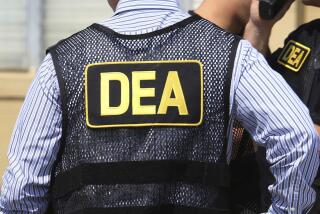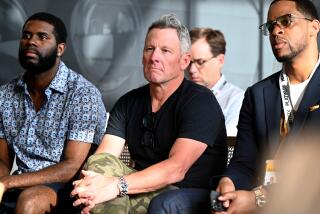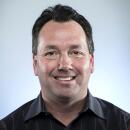Lance Armstrong stripped of Tour titles, ‘deserves to be forgotten’
- Share via
Cycling’s governing body Monday accepted the findings of a U.S. Anti-Doping Agency report about an elaborate doping program involving Lance Armstrong and stripped the famed athlete of his seven Tour de France titles and banned him from competition for life.
International Cycling Union (UCI) President Pat McQuaid said in Geneva he was “sickened” by the USDA findings, adding, “Lance Armstrong has no place in cycling.… He deserves to be forgotten.”
USADA sent 1,000-plus pages to UCI, including a report from 26 witnesses, including 11 former Armstrong teammates, who alleged Armstrong and his teams used steroids, the blood-booster EPO, blood transfusions and testosterone in a sophisticated doping scheme during his Tour de France title run.
PHOTOS: Lance Armstrong through the years
“It’s a very nasty story,” said Don Catlin, the International Olympic Committee medical commission member who has presided over sports drug testing since the 1980s. “Doping control has a lot of problems.”
Armstrong has long denied the doping allegations and has said he’s passed hundreds of drug tests. On Monday he declined to comment. At a charity fundraiser Sunday in Texas for Livestrong, his cancer charity, he told a crowd he’s faced a “very difficult” few weeks.
He also lost another longtime sponsor Monday, as Oakley sunglasses dropped Armstrong. Tour de France director Christian Prudhomme wants Armstrong to repay prize money for the championships he won from 1999 to 2005 and says the record books should be wiped clean without any champion named for that period.
Some Livestrong donors also want their money back. Michael Birdsong, of Salt Lake City, said he’s contributed to Livestrong. “The charity was established and publicized and got their funds based on a fraud,” he told CNN.
Yet, in assessing the USADA report, some close to the world of doping lament a harsher reality.
“This is a blueprint for all sport that still applies this very minute,” said Victor Conte, the notorious mastermind of the Bay Area Laboratory Co-Operative (BALCO) that supplied steroids and other banned substances to home run king Barry Bonds, Olympic sprinter Marion Jones and former world-champion boxer Shane Mosley.
Conte, who now identifies himself as an advocate for clean sports, said part of the blame falls on inadequate drug testing by sports agencies.
The USADA report alleges Armstrong used testosterone on the Tour to heal micro-sized tears and cuts in his muscle tissue from endurance racing.
Conte says USADA itself does not employ enough of the more sophisticated and expensive Carbon Isotope Ratio test for testosterone. The CIR test detects any presence of synthetic testosterone; the cheaper test requires highly elevated testosterone levels to declare a positive.
“It’s the biggest loophole in all of drug testing, because when you ask what the most anabolic drug is for power and speed, it’s testosterone,” Conte said. “The CIR test can detect use for up to two weeks. There wouldn’t have been seven Tour de France titles by Lance Armstrong if they had done this.”
In its report, USDA said, among other things, Armstrong and teammates:
-- Used small doses of performance-enhancing testosterone and EPO at night, taking advantage of the courtesy testers gave not to interrupt the riders’ rest after a daylong competition. Before or just after dawn, they would be back below positive levels.
-- Duped testers by methods including a fraudulent prescription, hiding behind locked doors, self-testing blood, receiving tips of testers’ visits and handsomely paying doctors to direct a doping plan.
The cat-and-mouse games were underway for Armstrong in 1998, a year before the Texan battled back from testicular cancer to win the first of his seven straight Tours, according to the report.
At that year’s World Championships in the Netherlands, a UCI tester entered a bed-and-breakfast common area linking the bedrooms of Armstrong, fellow riders Christian Vande Velde and Jonathan Vaughters and team doctor Pedro Celaya.
Alarmed that Armstrong’s use of EPO would generate a positive test showing the volume of his red blood cells above the acceptable 50%, Celaya shuffled to his car to “retrieve a liter of saline,” then used it to lower Armstrong’s red blood cells toward a normal male’s 45% level.
The doctor allegedly tucked the saline “under his raincoat and smuggled [it] right past the UCI tester and into Armstrong’s bedroom,” according to the report. “Celaya closed the bedroom door and administered the saline to Armstrong … without alerting the UCI tester to their activities.”
Catlin fumes that, “We should not be sitting here 25 years after this type of doping began, and still not have a great test for EPO.” EPO is a biotech drug developed to treat anemia, which has been used to illegally benefit athletes in many endurance sports.
The USADA “report shows how smart people are being about knowing when they’re ‘hot,’ and avoiding that window of detection,” Catlin said. “And our efforts in testing don’t rise to the level of the problem.”
According to the USADA report, athletes who altered their red-blood-cell levels could mask such enhancement with as little as 20 minutes’ notice.
Rider David Zabriskie, a former Armstrong teammate, said in the USADA report team director Johan Bruyneel and team masseuses “seemed to have an outstanding early-warning system regarding drug tests … an hour’s notice prior to tests.”
More details came from Armstrong’s former teammate Tyler Hamilton, in his book published this year, “The Secret Race.”
Hamilton claimed the Armstrong group remained “way, way ahead of the tests,” thanks to its reliance on team Dr. Michele Ferrari and a well-orchestrated scheme that employed motorcycle deliveries of EPO on the Tour in 1999, with the emptied syringes disposed in Coke cans.
When Armstrong tested positive that year for a cortisone, Hamilton claimed, a prescription was backdated for cortisone cream treatment of a supposed saddle sore, and there was no discipline.
In the 2000 Tour, Hamilton claimed he and Armstrong filled bags with their own blood before the competition in Spain, then took the transfusions of the rich blood before the crucial, mountainous stage 12 by hooking up to the bags taped to a wall above their beds.
In the USADA report, Hamilton explained, “UCI frequently would be lax in penalizing missed tests.”
Armstrong once simply withdrew from a lesser race, according to ex-teammate George Hincapie, when Hincapie texted him that testers were nearby.
Hamilton claimed Armstrong told him he tested positive for EPO in the 2001 Tour of Switzerland. Again, there was no discipline against the heroic cancer survivor and brightest star in the sport.
In 2009, a Tour testing agency reported Armstrong’s team that year “benefited from privileged information or timing advantages during doping control tests,” according to USADA.
Fallout from this could be to institute a church-and-state separation between sport and the testers.
“It’s not in their interest to have positives,” Catlin said in a general reference aimed at UCI. “So the way you stop surprise tests is to make sure there’s no surprise.”
WADA Director General David Howman called the USADA report “powerful and compelling,” and said Hamilton’s book was “devastating.”
Howman said it might also be appropriate for law enforcement to play a role in testing to deal more harshly with the illegal nature of some performance-enhancing substances.
There also needs to be a deeper investment in testing, Catlin said.
WADA has an annual budget of nearly $30 million, Catlin said, but that should be increased by 20 times to find scientists who can develop more sophisticated tests. “As long as the sports world cannot or will not pay for adequate testing, they’ll have to deal with the fact people are getting away with it.”
twitter.com/latimespugmire
More to Read
Go beyond the scoreboard
Get the latest on L.A.'s teams in the daily Sports Report newsletter.
You may occasionally receive promotional content from the Los Angeles Times.







